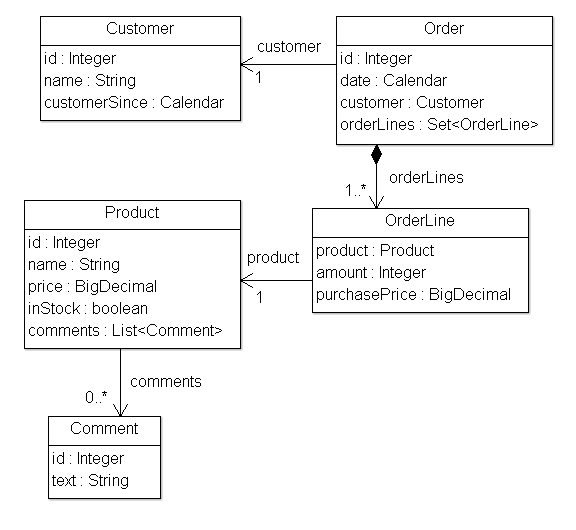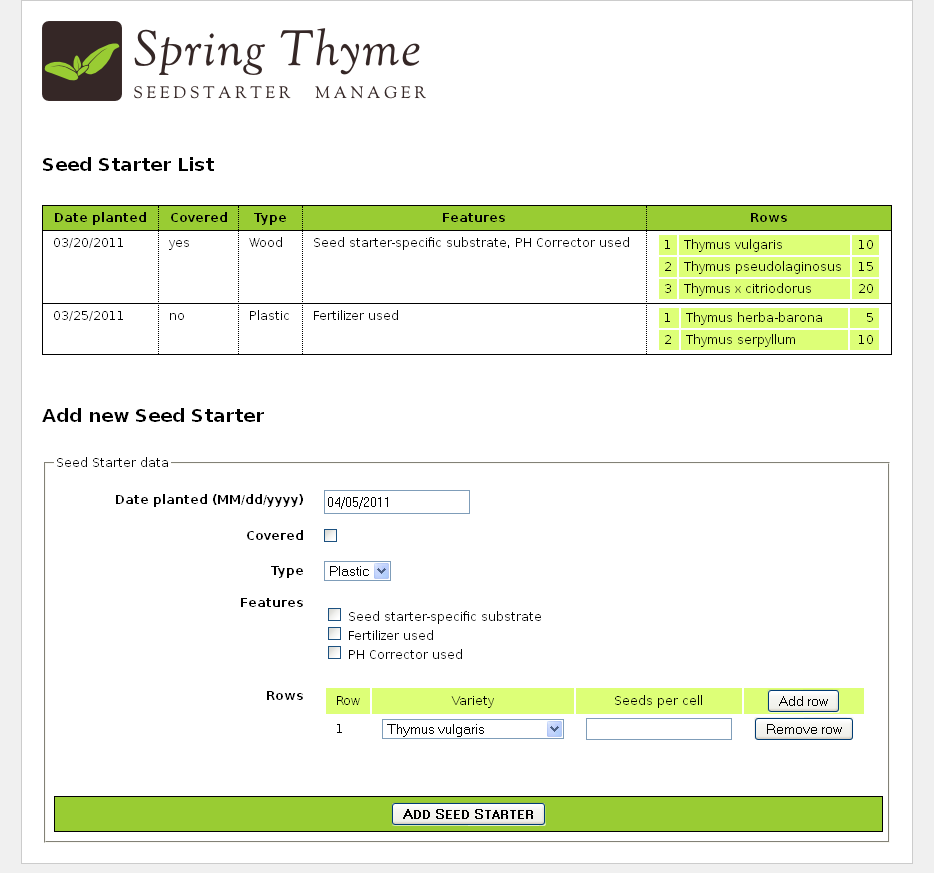Bạn đang muốn tìm hiểu thông tin về chủ đề “How do I pass a Java String[] array as arguments to a translation in Thymeleaf”. chuyenphatnhanhdhlvn.com sẽ tổng hợp các thông tin để trả lời thắc mắt cho các bạn trong bài viết này. Mời các bạn đọc hết bài viết này để tìm được những thông tin mà mình muốn xem nhé. Bạn cũng có thể xem thêm một số bài viết chủ đề khác tại đây: chuyenphatnhanhdhlvn.com/blog Thymeleaf la gì, Thymeleaf if-else, Thymeleaf forEach, Thymeleaf th:if, Th:with Thymeleaf, Redirect thymeleaf, Create array in thymeleaf, th:text.
Xem thông tin về How do I pass a Java String[] array as arguments to a translation in Thymeleaf
Thông tin về câu hỏi
- Câu hỏi: How do I pass a Java String[] array as arguments to a translation in Thymeleaf
- Thời gian hỏi: Cập Nhập 16 Phút Trước
- Thời gian trả lời: Cập Nhập 34 Ngày Trước
- Số lượt xem: 14780
How do I pass a Java String[] array as arguments to a translation in Thymeleaf
To pass a Java String[] array as arguments to a translation in Thymeleaf, you can use the #arrays utility object provided by Thymeleaf. Here’s an example:
-
In your Java code, create a
String[]array:javaString[] fruits = {"apple", "banana", "orange"}; -
In your Thymeleaf template, add the
th:textattribute to the element where you want to display the translated string:html<p th:text="#{fruit.list}"></p>Here,
#{fruit.list}is the key for the translation message that takes aString[]array as an argument. -
Pass the
fruitsarray as an argument to the translation message using the#arraysutility object:html<p th:text="#{fruit.list(${#arrays.toString(fruits)})}"></p>The
#arrays.toString()method converts thefruitsarray to a comma-separated string that can be passed as an argument to the translation message. -
Define the translation message in your message properties file:
cssfruit.list=List of fruits: {0}Here,
{0}is a placeholder for theString[]array argument.
When the Thymeleaf template is rendered, the #{fruit.list} expression will be replaced with the translated string “List of fruits: apple, banana, orange”.
Xem video liên quan đến How do I pass a Java String[] array as arguments to a translation in Thymeleaf
How to pass only string in thymeleaf form?
How to use Java in Thymeleaf?
Thymeleaf is a Java-based template engine that allows you to easily integrate Java code into your HTML templates. You can use Java in Thymeleaf by following these steps:
- Include Thymeleaf dependency in your Java project. You can add the following dependency to your
pom.xmlfile if you are using Maven:
php<dependency> <groupId>org.thymeleaf</groupId> <artifactId>thymeleaf</artifactId> <version>{version}</version> </dependency>
- Create a Thymeleaf HTML template and save it in your project’s
resources/templatesdirectory. For example, you can create a file namedindex.htmland add the following content:
php<!DOCTYPE html> <html xmlns:th="http://www.thymeleaf.org"> <head> <title>Thymeleaf Example</title> </head> <body> <h1 th:text="${message}"></h1> </body> </html>
In this example, we are using Thymeleaf’s th:text attribute to display the value of a variable called message.
- Create a Java class that will provide the data to be displayed in the Thymeleaf template. For example, you can create a class named
HomeControllerand add the following content:
kotlin@Controller public class HomeController { @GetMapping("/") public String index(Model model) { model.addAttribute("message", "Hello, world!"); return "index"; } }
In this example, we are using Spring’s @Controller annotation to indicate that this class is a controller. We are also using Spring’s @GetMapping annotation to indicate that the index method should be invoked when the user visits the root URL. Finally, we are adding the message variable to the Model object, which will be passed to the Thymeleaf template.
- Run the Java application and visit the root URL in your browser. You should see the message “Hello, world!” displayed on the page.
That’s it! By following these steps, you can use Java in Thymeleaf to create dynamic HTML templates that display data from your Java application.
Is Thymeleaf still used?
Yes, Thymeleaf is still used as a popular server-side Java template engine for building web applications. It is widely adopted by developers due to its ease of use, powerful features, and seamless integration with Spring Framework.
Thymeleaf allows developers to create dynamic web pages by combining HTML templates with data from the server-side, such as model attributes or session variables. It also supports various expression languages, including Spring EL, OGNL, and others, making it highly versatile and adaptable to different use cases.
Moreover, Thymeleaf offers a wide range of features, including conditional expressions, loops, form handling, internationalization, and more, which help developers to build robust and scalable web applications efficiently.
In summary, Thymeleaf is still a widely used template engine in the Java ecosystem, and it continues to evolve with new features and enhancements to meet the changing needs of modern web development.
Which is better FreeMarker or Thymeleaf?
FreeMarker and Thymeleaf are both popular template engines used in web development. Both are capable of generating dynamic web pages and are suitable for use in a wide range of applications.
The choice between FreeMarker and Thymeleaf depends on the specific needs and requirements of your project. Here are some factors to consider:
-
Syntax: FreeMarker uses a syntax similar to that of JSP, while Thymeleaf has its own unique syntax. If you are familiar with JSP, you may find FreeMarker easier to work with.
-
Integration with frameworks: Thymeleaf is a popular choice for use with Spring, while FreeMarker is often used with other frameworks like Struts or Wicket.
-
Performance: Both FreeMarker and Thymeleaf are fast and efficient, but Thymeleaf is known to be particularly fast due to its unique caching mechanisms.
-
Community support: Both FreeMarker and Thymeleaf have active communities and are well-documented, so you should be able to find help and resources for both.
In summary, there is no one-size-fits-all answer to which is better between FreeMarker and Thymeleaf. You should consider the specific requirements of your project and choose the one that best meets your needs.
Hình ảnh liên quan đến How do I pass a Java String[] array as arguments to a translation in Thymeleaf
Phát hiện thấy 40 nội dung liên quan đến chủ đề How do I pass a Java String[] array as arguments to a translation in Thymeleaf.


Bạn có thể xem thêm một số thông tin liên quan đến How do I pass a Java String[] array as arguments to a translation in Thymeleaf tại đây
- json – Passing an array of ints from my HTML to Controller with …
- Working With Arrays in Thymeleaf – Baeldung
- I18n messages and array arguments · Issue #345 – GitHub
- String concatenation with Thymeleaf – Wim Deblauwe
- Upload Multiple Files in Spring Boot using JPA, Thymeleaf …
- How to Internationalize and Localize Your Java and Spring …
- MyBatis Thymeleaf User’s Guide
- Introduction to Using Thymeleaf in Spring – Baeldung
- Thymeleaf
- FreeMarker vs Groovy vs Mustache vs Thymeleaf | SpringHow
- Thymeleaf vs JSP | Which one is Better? in 2023 – MindMajix
- “How-to” Guides – Spring Boot
Bình luận của người dùng về câu trả lời này
Có tổng cộng 263 bình luật về câu hỏi này. Trong đó:
- 71 bình luận rất tuyệt vời
- 590 bình luận tuyệt vời
- 308 bình luận bình thường
- 58 bình luận kém
- 31 bình luận kém rém
Vậy là bạn đã xem xong bài viết chủ đề How do I pass a Java String[] array as arguments to a translation in Thymeleaf rồi đó. Nếu bạn thấy bài viết này hữu ích, hãy chia sẻ nó đến nhiều người khác nhé. Cảm ơn bạn rất nhiều.